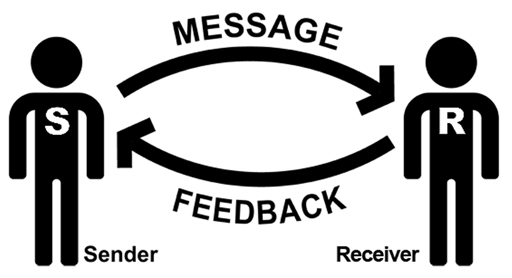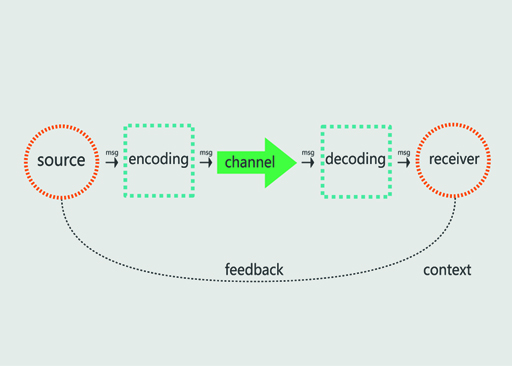3 How does the communication process work?
You communicate every day, whether it is in the form of a face-to-face or telephone conversation, an email, a text message, a Facebook post, a tweet or a presentation. Yet you will rarely stop to think about the way you delivered your ‘message’.
Figure 2 demonstrates the communication process. The critical aspects of communication are how the sender conveys the message and how the recipient receives it.
In Figure 2, the receiver must provide feedback to allow the sender to know that the message has been understood.
Although this illustration demonstrates that communication is always between two parties, it is important to note that it is not always between two individuals.
Activity 3 Communication parties
Think of yourself as the sender and make a quick list of the receivers of your communications in an average day.
Discussion
Was it a long list or did you struggle to identify anyone? Examples might include the following.
Verbal (oral) communication: People you meet during your commute to work, colleagues in your department, staff in the canteen, retail staff in a local shop etc. There may also be situations where you are communicating with several colleagues at once, such as in a meeting or while giving a presentation.
Written communication: In an average day you might send emails to colleagues, customers, suppliers or friends. Are any of those messages sent to multiple receivers? Do you do anything differently when they are?
Do you communicate with everyone in the same way, or do you change your tone, language etc. to suit your audience? You’ll learn more about adapting your communication style in Week 2.
Figure 2 was a highly simplified representation of communication. Figure 3 shows how communication of the message can be broken down further.
Box 1 From source to receiver
‘The source’ is the sender. When you speak to someone or send an email, you are the source of the message.
‘Msg’ is the message.
‘Encoding’ is the construction of your message. Effective encoding will demonstrate clarity, and use appropriate language, reducing the risk of confusion. You should consider how the person reading or listening to your message will respond. If you are communicating your message to more than one person, remember that each person may receive it differently.
‘Channel’ is the form of communication (e.g. email, text message, telephone or face-to-face conversation). You should consider the best channel to deliver a message. For example, sometimes written communication may be the best approach, but not always. Understanding your audience is important in choosing your channel.
‘Decoding’ is the process that occurs when the recipient(s) hear or read your message. Effective decoding will occur if you have written or spoken your message clearly, demonstrating an understanding of what the receiver may know already. This helps the receiver to interpret the message correctly. Decoding is obstructed if you do not use appropriate language (e.g. the excessive use of jargon).
‘The Receiver’ is the recipient. It is important to note that one recipient may interpret the message differently to another. This is particularly relevant when sending a message to a number of recipients, such as a written communication (including emails, text messages or reports) or verbal communication to a group.
‘Feedback’ is critical. This helps you to judge whether your message has been received in the way that you intended. If you are delivering the message face-to-face (in person or via video messaging such as Skype) you can look for non-verbal as well as verbal responses to your message. You can also ask questions to help ensure that the message has been understood.
If you have ever been in a situation where someone disagreed with you and you felt that your point of view was not being heard, there could have been something wrong with the way that you were trying to deliver your message, or the way they were receiving it.
Effective communication can be achieved if you follow a simple process that allows you and the message recipient to understand exactly what you are trying to convey. The next section shows you an easy to follow, practical approach that will help to ensure that your communication is more effective.


